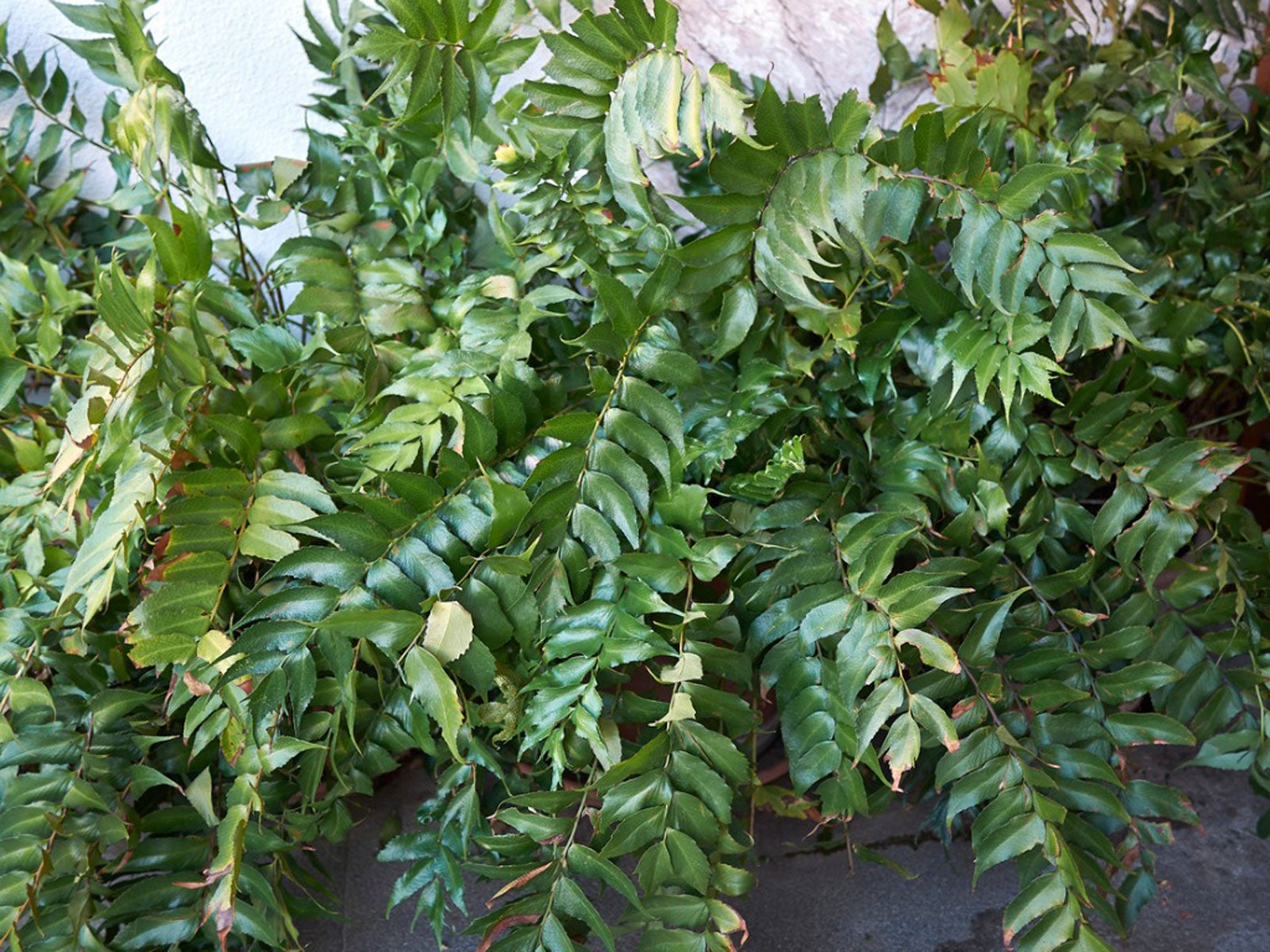Growing Holly Ferns: Information On Holly Fern Care


Holly fern (Cyrtomium falcatum), named for its serrated, sharp-tipped, holly-like leaves, is one of the few plants that will grow happily in the dark corners of your garden. When planted in a flower bed, the lush, deep green foliage provides beautiful contrast as a background for colorful annuals and perennials. Read on to learn about the care of holly ferns.
Holly Fern Facts
Also known as Japanese holly fern, this substantial plant reaches mature heights of 2 feet (0.5 m.) with a spread of about 3 feet (1 m.). Holly fern works well as a border plant or a ground cover. You can also plant holly fern in a container and grow it outdoors or as a houseplant. Although it doesn't tolerate extreme cold, holly fern survives moderately harsh winters with no problem. Holly fern is suitable for growing in USDA plant hardiness zones 6 through 10. It is evergreen in mild climates.
How to Grow a Holly Fern
Growing holly ferns from a starter plant or divided plant is remarkably simple. The plant prefers well-drained, acidic soil with a pH between 4.0 and 7.0, and thrives in rich soil high in organic matter. Dig in two or three inches (5 to 7.5 cm.) of compost or other organic material, especially if your soil is clay-based. Indoors, holly fern needs a well-drained, lightweight potting mixture and a pot with a drainage hole. Although it grows in full shade, holly fern does just fine in partial, but not punishing sunlight. Indoors, place the plant in bright, indirect light.
Care of Holly Ferns
Holly fern likes moist, but not soggy, soil. During dry weather, give the plant about an inch (2.5 cm.) of water per week. Indoors, water the plant whenever the top of the soil feels slightly dry. Water deeply, then let the pot drain thoroughly. Avoid soggy soil, which may result in root rot.
Fertilize holly fern using a diluted solution of balanced, slow-release fertilizer after new growth emerges in spring. Alternatively, feed the plant occasionally with a water-soluble fertilizer or fish emulsion.
Don't overfeed; ferns are light feeders that are damaged by too much fertilizer. Outdoors, apply a 2-inch (5 cm.) layer of mulch, such as pine straw or shredded bark, in spring and autumn.
Holly fern care involves periodic grooming. Trim the plant whenever it looks shaggy or overgrown. Don't worry if holly fern drops its leaves during cold weather. As long as the plant doesn't freeze, it will grow back in the spring.
Sign up for the Gardening Know How newsletter today and receive a free copy of our e-book "How to Grow Delicious Tomatoes".

A Credentialed Garden Writer, Mary H. Dyer was with Gardening Know How in the very beginning, publishing articles as early as 2007.